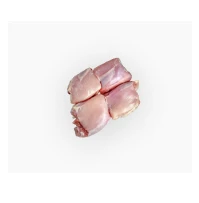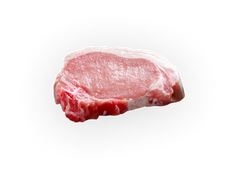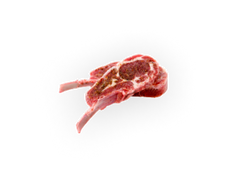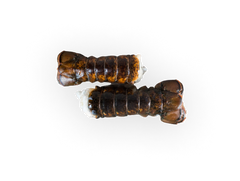There’s something undeniably satisfying about biting into a perfectly smoked piece of meat—tender, juicy, and infused with that signature smoky flavour. For many Canadians, smoking meats is more than just a cooking method—it’s a tradition, a hobby, and, for some, a full-blown passion. Whether you're a weekend warrior with a backyard smoker or a curious beginner looking to dive into the world of smoked cuisine, this guide will walk you through everything you need to know to get started.
Why Smoke Meat?
Smoking is one of the oldest forms of food preservation and flavouring. Originally used to preserve meat before refrigeration, smoking today is all about enhancing flavour and creating melt-in-your-mouth textures. The process of slow-cooking meat over indirect heat with wood smoke allows for deep flavour penetration and tender results that are hard to beat with other cooking methods.
Choosing the Right Smoker
Before you can begin, you’ll need the right equipment. There are several types of smokers to choose from, and the best one for you depends on your budget, space, and level of commitment.
1. Charcoal Smokers
These are a favourite among purists who swear by the authentic flavour that charcoal provides. They require a bit more attention and practice to master, but many enthusiasts enjoy the hands-on process. The Weber Smokey Mountain is a popular choice.
2. Electric Smokers
If you’re looking for convenience, electric smokers are a great option. They maintain a consistent temperature, making them ideal for beginners. Brands like Masterbuilt are widely available across Canada.
3. Pellet Smokers
Pellet smokers use compressed wood pellets as fuel and are controlled with digital thermostats, combining convenience with real wood smoke flavour. Traeger and Pit Boss (a Canadian brand!) are two of the most popular options.
4. Offset Smokers
Often seen as the gold standard for traditional BBQ, offset smokers use a firebox attached to the side of the main cooking chamber. They offer full control over the smoking process but have a steeper learning curve.
Selecting the Right Wood
Different woods impart different flavours, and matching the right wood to your meat is essential.
-
Hickory: Strong, smoky, and bacon-like. Great for pork and ribs.
-
Mesquite: Bold and earthy. Best for red meats like brisket.
-
Apple: Mild and sweet. Ideal for chicken and pork.
-
Maple: A Canadian favourite—mild, slightly sweet, and perfect for poultry and pork.
-
Cherry: Subtly sweet and fruity. Great for all meats and adds a beautiful colour.
If you’re just getting started, try mixing woods for a balanced profile. For example, hickory and apple make a great combo for pulled pork.
Meat Selection and Preparation
While you can smoke just about anything, some cuts are better suited for smoking than others.
Best Meats to Smoke:
-
Brisket: The crown jewel of smoked meats. Requires patience but delivers unmatched flavour and texture.
-
Pork Shoulder (aka Pork Butt): Perfect for pulled pork. Forgiving and flavourful.
-
Ribs: Whether baby back or St. Louis style, ribs are a BBQ classic.
-
Chicken: Affordable and quick. Try smoking a whole chicken or thighs.
-
Sausages and Bacon: A great place to start, especially if you're short on time.
Prepping Your Meat
Preparation starts long before your smoker gets fired up.
-
Trim excess fat, especially on brisket or pork shoulder, to help smoke penetrate better.
-
Apply a rub: Dry rubs are blends of spices that add flavour and help form a crust, or "bark," on the meat. A basic rub includes salt, pepper, paprika, garlic powder, and brown sugar.
-
Marinades and brines: These are optional but can enhance flavour and moisture, especially for poultry.
Smoking Techniques and Tips
Temperature Control is Key
Low and slow is the mantra of smoking. Most meats are smoked between 225°F and 250°F. Invest in a good quality meat thermometer (like a ThermoPro or MEATER) to monitor internal temps without opening the lid too often.
The Stall
Around 150°F internal temperature, large cuts like brisket can hit "the stall"—a frustrating plateau where the temperature stops rising. Don’t panic! This is normal. It’s caused by moisture evaporating from the meat’s surface. You can either ride it out or wrap your meat in butcher paper or foil (known as the Texas Crutch) to speed things up.
Resting
Once your meat hits the desired temperature, don’t cut into it right away. Let it rest, tented in foil, for at least 30 minutes. This allows juices to redistribute, making the meat more tender and flavourful.
Weather Considerations for Canadian Smokers
Smoking meat in Canada often means dealing with unpredictable weather. Cold and wind can affect your smoker’s temperature stability, so be prepared:
-
Use an insulated blanket or welding blanket to wrap your smoker in colder months.
-
Try to set up in a sheltered area, away from wind and rain.
-
Allow extra time in the winter, as cooking times may increase.
Safety First
-
Always use proper ventilation when operating smokers, especially electric or gas models.
-
Never smoke indoors.
-
Keep a fire extinguisher nearby if you're working with charcoal or wood.
-
Make sure meats are cooked to safe internal temperatures: 165°F for poultry, 195°F for pulled pork, and 203°F for brisket.
Canadian Flavours to Try
Why not add a taste of home to your next smoke?
-
Maple syrup glazes on ham or chicken add a sweet, caramelized crust.
-
Try a dry rub with Montreal steak spice—a classic blend that works beautifully on brisket or ribs.
-
Add a Canadian whisky spritz (mixed with apple juice) to keep pork shoulder moist and add an extra layer of flavour.
Smoking meat is a labour of love, and like any good Canadian pastime—whether it's ice fishing, backyard hockey, or curling up by the fire—it’s as much about the process as it is the result. The more you do it, the better you’ll get. Experiment with different woods, rubs, and techniques. Take notes, try new recipes, and most of all, enjoy the journey.
So grab your smoker, pick your cut, and let the smoke roll. Your neighbours might just “drop by” when they smell what you’re cooking.










